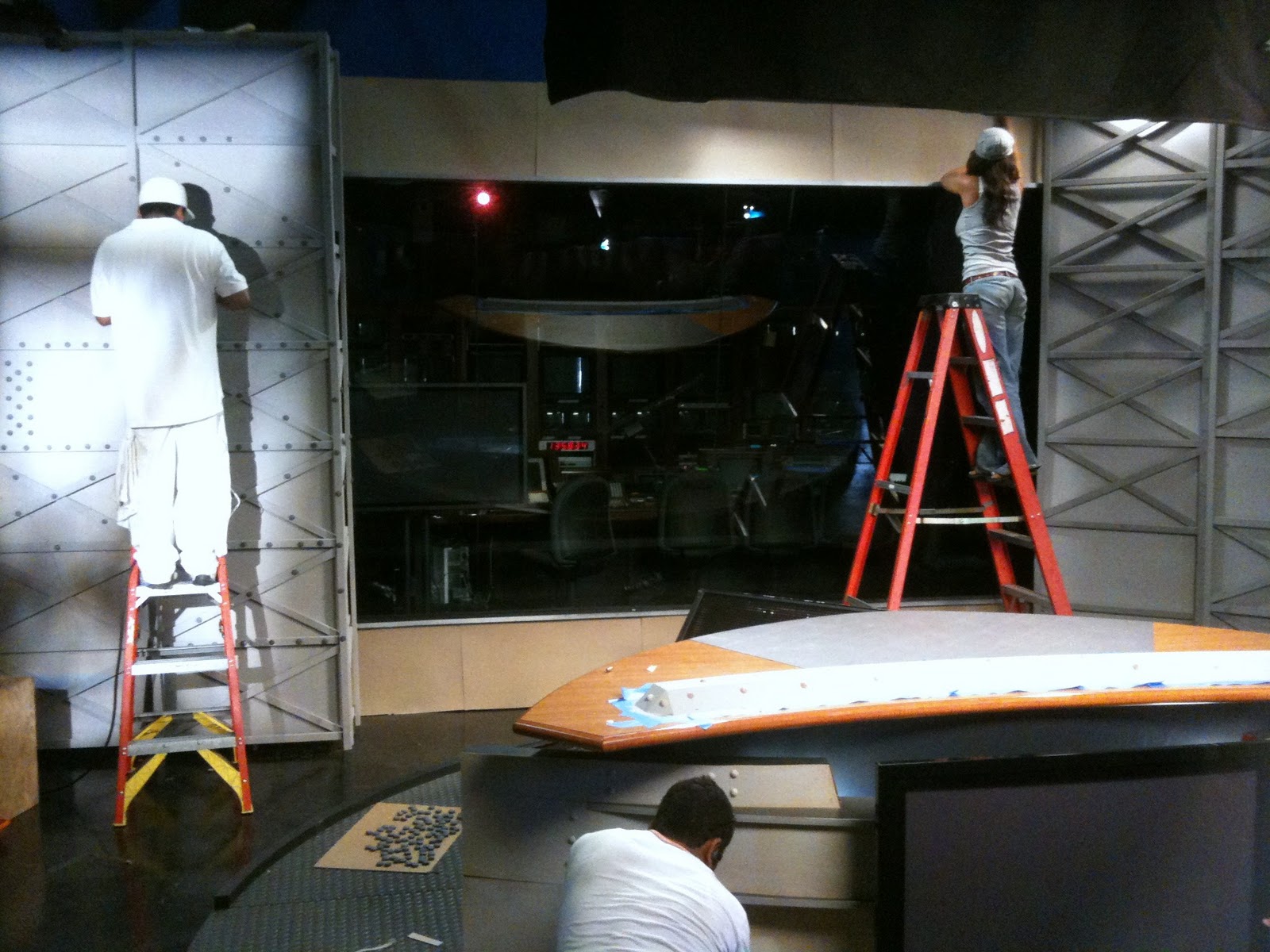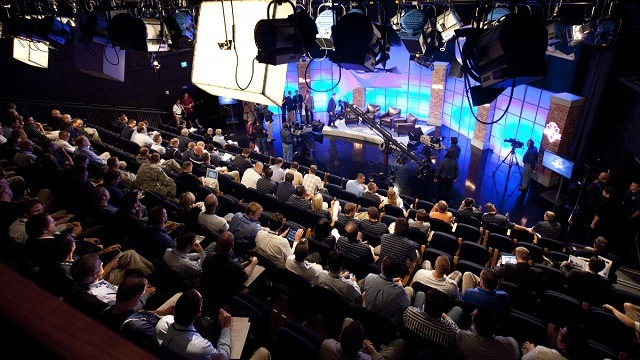Have you ever tried to change the tires on a moving car? That’s similar to the challenges of running a live television broadcast studio facility. While it may seem an extreme example, live television is thrilling, exhilarating, stress max and fast paced. You have to get it right the first time since there are no second chances. Millions of people may see what you do in real-time and you don’t get a do-over.
So how does somebody wind up in Broadcast Facilities Management (BFM)? Well, it’s not that different from how most people wind up as a non-broadcast facilities manager.
Ask a facilities manager how they got into the field and most will tell you they “fell into it”. You may have started in sales or office management in a small firm and unsuspectingly became the office’s “Jack of all Trades” which, by the way is the secret pre-requisite for becoming a FM. You take on side responsibilities like phone programming, office maintenance and repairs while performing your actual day job which may be meeting your sales pipeline. Before you know it, you are the de facto vice president of everything nobody else wants to do.
While most FM’s have responsibilities for coordinating the physical workplace, business administration, architecture, engineering new technologies, environmental and health concerns, I view Broadcast Facilities Management as Facilities Management on steroids. BFM goes beyond the traditional example of “Walls, Mops and Cops”. Rather, the broadcast facility manager is akin to a mashup of a dozen careers wrapped into one person that most people don’t see in a lifetime.
For me, it was a background in television production, ownership in publishing, sales and marketing, studio management, operations and live production to studio facilities, design and construction.
A broadcast facilities manager possess a thorough understanding in many disciplines including audio/video production and engineering, digital video effects, lighting, acoustics, scheduling, cabling, studio HVAC, tape and tapeless recording, editing rooms, IT, video servers and audio/video routers, satellite and fiber transmissions, analog vs. digital and high-definition, web encoding and streaming, graphics and robotic cameras, to name just a few.
Technology changes rapidly and in the era of high-definition, they must be on top of the latest equipment and toys. Every technical room and piece of equipment is interconnected to integrate audio and video from various sources within the facility to a recorded medium or live to air.
 A day in the life of a studio facility is like a revolving door of daily changes. In a multi-studio facility, you could be shooting a talk show in one stage while loading in, building a set and lighting for another shoot. Most independent studios rely on freelance personnel including camera operators, grips, electricians, carpenters, control room personnel, audio and video technicians, stagehands, union and non-union personnel. Here today, gone tomorrow.
A day in the life of a studio facility is like a revolving door of daily changes. In a multi-studio facility, you could be shooting a talk show in one stage while loading in, building a set and lighting for another shoot. Most independent studios rely on freelance personnel including camera operators, grips, electricians, carpenters, control room personnel, audio and video technicians, stagehands, union and non-union personnel. Here today, gone tomorrow.
A talk show can produce up to three shows per day with multiple audiences of several hundred guests per show. Corralling and moving hundreds of people into a studio facility can be similar to herding travelers through a TSA checkpoint and into holding areas. Maintaining building security and controlling the movement of guests to restrooms and the studio while preparing the next audience is an art.
 With hundreds of guests, crew and hot lights, TV studios generate tremendous heat loads and the studio quickly becomes a sauna. HVAC is of primary concern, but don’t forget this is a broadcast studio and it needs to be cool, yet quiet. Sound is of preeminent concern and must be balanced so the cooling needs of the facility are met while the whirring of air handlers and air volume are not picked up by microphones. Exhausting heat and pumping in a tremendous volume of cold air while maintaining a silent system is challenging.
With hundreds of guests, crew and hot lights, TV studios generate tremendous heat loads and the studio quickly becomes a sauna. HVAC is of primary concern, but don’t forget this is a broadcast studio and it needs to be cool, yet quiet. Sound is of preeminent concern and must be balanced so the cooling needs of the facility are met while the whirring of air handlers and air volume are not picked up by microphones. Exhausting heat and pumping in a tremendous volume of cold air while maintaining a silent system is challenging.
And what about the on-camera personalities? Most FM’s don’t encounter celebrities on a daily basis and catering to their needs can be just as complex as managing a facility BMS (Building Management System). The difference is you can shut the BMS down. Celebrities require a certain amount of pampering because their comfort in your studio can mean the difference in booking the next project in your studio or not.
Having worked with hundreds of famous personalities, I found them to be both down to earth and difficult to work with. One famous actress blew a gasket because we provided Poland Spring water rather than Perrier. That goes way beyond dealing with employees complaining about the thermal comfort of their office. Having the NYPD arrest a guest in the green room after a taping because he essentially confessed to a crime is not an everyday occurrence at most jobs.
The studio facility manager is also a landlord to a tremendous amount of real estate and equipment that’s rented out to production companies on a per project basis. You always strive for the long-term talk show that will keep one stage locked up for several seasons to cover your nut. And depending on the project, the client may take up residence in your production offices for a few days, weeks or years. The downside to running a facility is if production slows down, like any other business they are giant pieces of real estate with expensive state of the art equipment laying idle. And the equipment leases and rent must still be paid.
I worked at several high-profile facilities including Times Square Studios at 42nd Street and 7th Avenue (before ABC built the current Good Morning America stages of the same name). Geraldo had his nose broken in studio 4 and we taped many seasons of The Montel Williams Show. I started in sales and wound up General Manager. After our studio was shut down to make way for the Reuters Tower, I moved on and was head of operations and Vice President of Facilities at News Broadcast Network for 12 years operating and building facilities as well as producing live events.
When I try to define what it is that I do, it crosses just about every department and discipline within an organization. Looking back at my various jobs, facilities management was not my initial career path. But thank goodness for that jack of all trades experience as it has proven to be instrumental in providing a wide variety of talents to my previous employers and current clients. The relationships I’ve built and the camaraderie of the crews is something I always cherish in this close and extremely talented industry of creative professionals.
Richard Neuman is an Owner’s Rep with New York based Relocation Management Solutions providing consulting and project management services to commercial tenants, hospitals, healthcare offices, commercial tenants and broadcast facilities for construction, renovation, expansion, relocation, and facility maintenance projects
Discover more from Helping NYC & Long Island Commercial Tenants, Owners, and Developers
Subscribe to get the latest posts sent to your email.






as a M.A student I did a study on “Thermal Comfort in TV Studios”. Surveying IRIB on-air studios, I found that air temperature in studios shoud be between 18 and 28 sentigrad degree….
Hi Mahnaz, thanks for your reply.
For the benefit of the readers, the conversion of 18 and 28 degrees Celsius is between 64.4 and 82.4 degrees Fahrenheit. I do think that temperature swing is a bit extreme on both ends of the scale, though.
I was often referred to as the polar bear because I preferred it colder. But when we’ve lowered the temperature below 66°F (or 19°C) in technical spaces, the employees would come in with hats and scarves and complain. However, it is a great temperature to maintain in the studio under the hot lights. Temperatures above 72°F (22°C) would get a little warm and humid. But as I said, I’m probably a bad example to judge temperature by as I prefer cold and snow vacations rather than warm and sunny spots.
When I was in the HVAC service business when I was young (family owned residential contractor), we did the HVAC service for a Public Broadcasting TV station and it was important to keep the studios cool. It was often a challenge, in real time broadcasting.